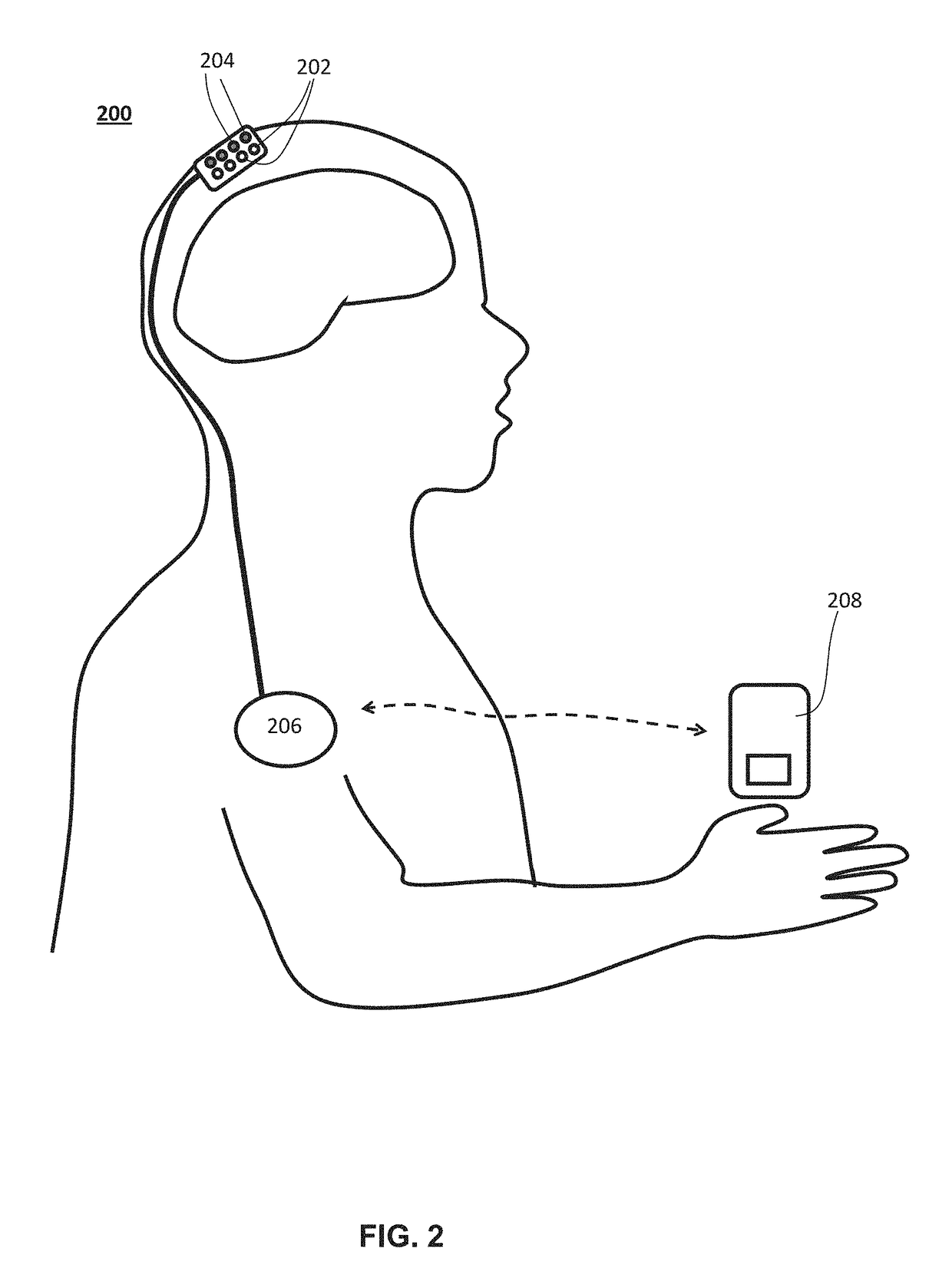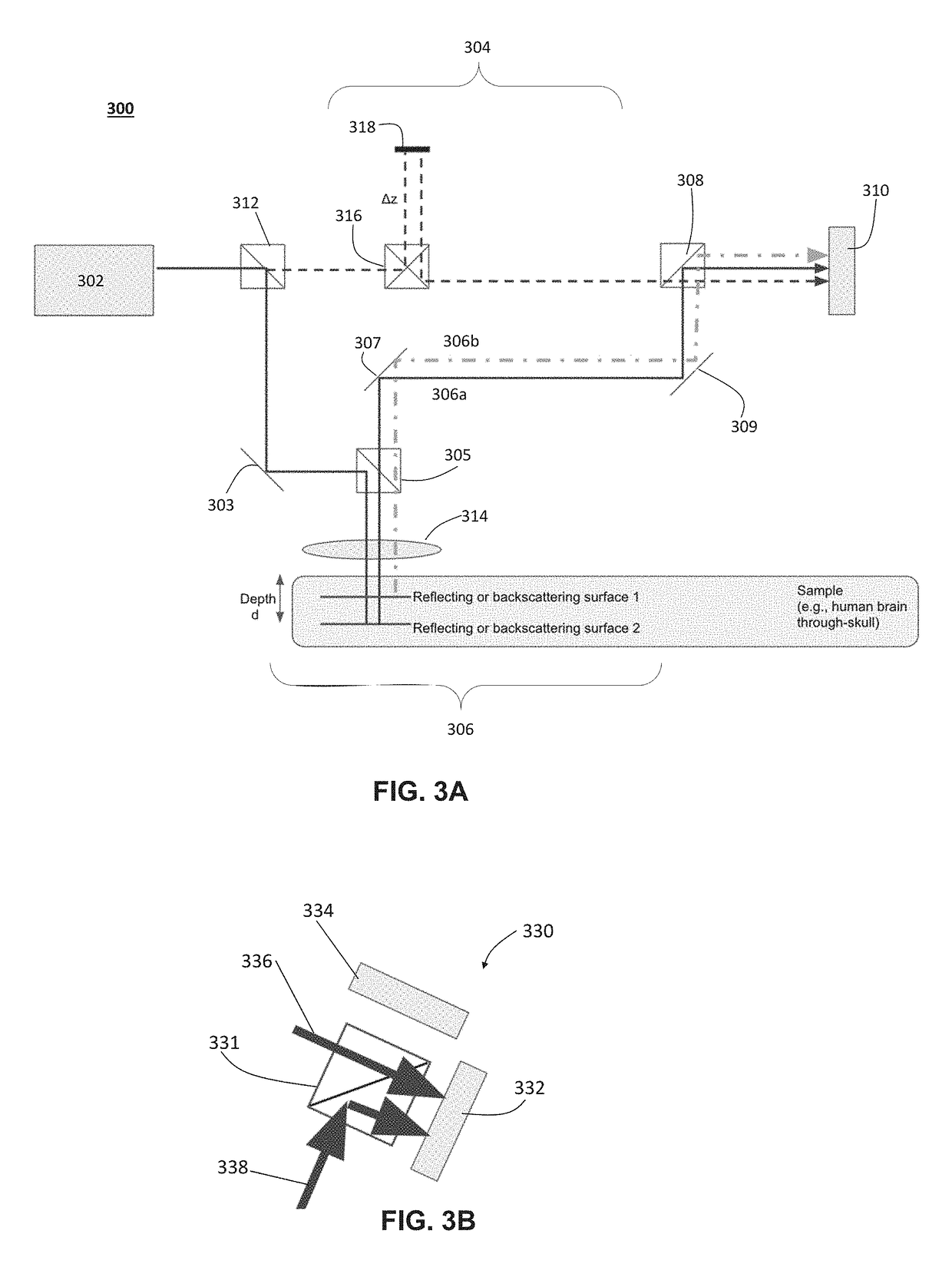Systems and methods for quasi-ballistic photon optical coherence tomography in diffusive scattering media using a lock-in camera detector
a technology of optical coherence tomography and camera detector, which is applied in the field of systems and methods for quasi-ballistic photon optical coherence tomography in diffusive scattering media using a lock-in camera detector, can solve the problem of relatively limited spatial resolution
- Summary
- Abstract
- Description
- Claims
- Application Information
AI Technical Summary
Benefits of technology
Problems solved by technology
Method used
Image
Examples
Embodiment Construction
[0025]Described herein are systems and methods for functional brain imaging using low-coherence interferometry, including noninvasive functional imaging of the human brain (e.g., as part of a brain-machine interface and / or for acquiring neural data or images with higher spatiotemporal resolution as compared to diffuse optical tomography). These systems and methods may comprise optical interference components and techniques using a lock-in camera, as opposed to a conventional camera, to provide a highly efficient and scalable scheme that enables detection of highly localized and high spatial resolution signals, to generate images or tomograms of deep structures in diffusive, high-scatter media. In general, lock-in cameras include a class of digital cameras in which multiple measurements of a light field are rapidly made at each pixel in a temporally precise fashion synchronized with an external trigger or oscillation and stored in multiple “bins” within each pixel, in contrast with c...
PUM
| Property | Measurement | Unit |
|---|---|---|
| time | aaaaa | aaaaa |
| width | aaaaa | aaaaa |
| time interval | aaaaa | aaaaa |
Abstract
Description
Claims
Application Information
 Login to View More
Login to View More - R&D
- Intellectual Property
- Life Sciences
- Materials
- Tech Scout
- Unparalleled Data Quality
- Higher Quality Content
- 60% Fewer Hallucinations
Browse by: Latest US Patents, China's latest patents, Technical Efficacy Thesaurus, Application Domain, Technology Topic, Popular Technical Reports.
© 2025 PatSnap. All rights reserved.Legal|Privacy policy|Modern Slavery Act Transparency Statement|Sitemap|About US| Contact US: help@patsnap.com



